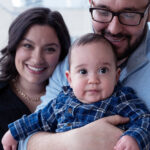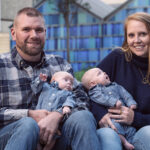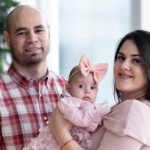‘Zero place for mistakes’: Taking fetal surgery to the next level with simulation

The highly complex interventions involved in fetal surgery require exceptional skill, training, and experience. Beyond the procedures themselves, these surgical scenarios depend on the ability of team members to work in concert. It’s a seamless collaboration that’s even more crucial when two patients — the pregnant person and fetus — are involved.
When the Fetal Care and Surgery Center at Boston Children’s Hospital (FCSC) began to expand its range of fetal interventions, its leadership knew that such coordination would be key to success. The FCSC’s director, fetal surgeon Alireza A. Shamshirsaz, MD (“Shami”), reached out to Boston Children’s Immersive Design Systems (IDS), the hospital’s integrated simulation program and full-scale design lab that helps teams sharpen skills, enhance performance, and mitigate risks.
“We wanted to get our whole fetal care team trained, but also to improve communication skills between different providers who haven’t worked together and may not be familiar with these types of interventions,” explains fetal surgeon Eyal Krispin, MD.
That decision, made some two years ago, began what has become a close and ongoing partnership between the FCSC and IDS.
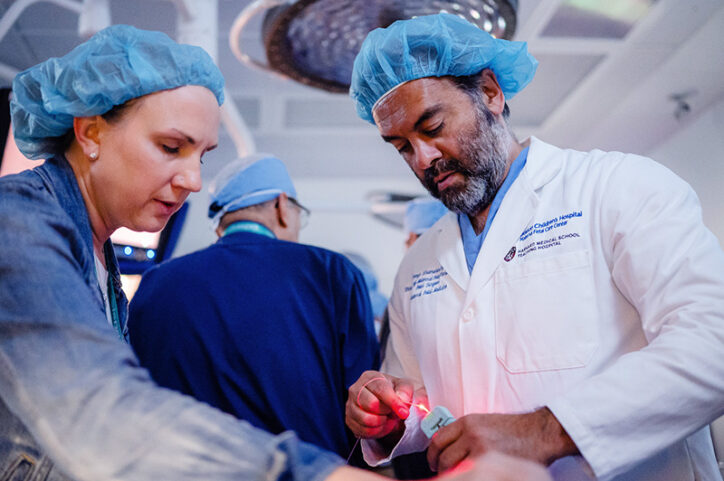
Mapping the operative journey
The group’s first priority was to map the entire operative journey for fetal interventions. Specifically, says Krispin, the team hoped to improve communication between members and develop protocols for working together throughout the surgical process. “IDS helped us create simulations for everyone involved in the OR, including our surgeons, anesthesiologists, nurses, technicians, and the rest of the clinical team,” he says. The resulting practice sessions “helped break the ice” with clinicians who hadn’t necessarily worked together before, giving them the freedom to make mistakes and identify areas for improvement in a low-risk, psychologically safe environment.
Similarly, the FCSC wanted to develop and refine an emergency response process for transferring pregnant patients when necessary — typically not a concern at a pediatric hospital, but a rare possibility with fetal surgery if complications like cardiac arrest or a major hemorrhage occur. Together with the FCSC, IDS created three such systems: one for the OR, one for the PACU, and one for additional transport, since these patients are sometimes transferred to local adult hospitals.
“There’s a lot of nuances in these scenarios, and we needed a concrete plan that let clinicians practice communication and teamwork during an emergency,” says Brianna O’Connell, senior training and performance specialist for IDS. This ongoing opportunity for practice allowed the teams to observe gaps in their responses and adjust accordingly so they are as prepared as possible if an emergency arises.
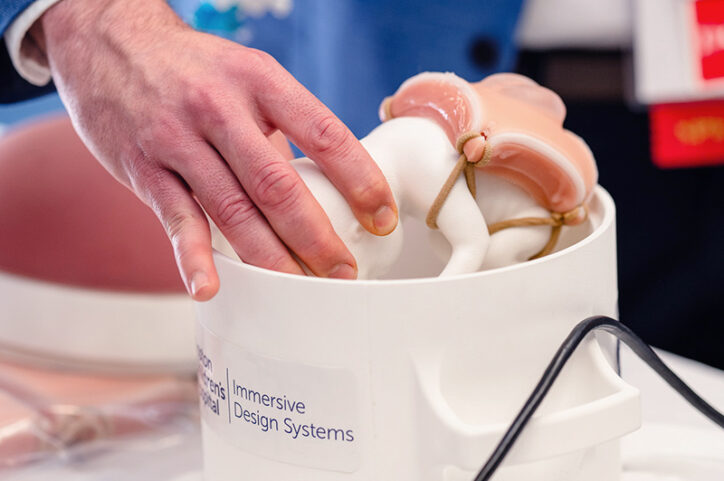
Models to enhance fetal surgery training
As fetal interventions continue to evolve, surgical training is key. Even the most skilled pediatric surgeons may not be as familiar working with the uterus or a fetus, for example. What’s more, the need for extreme precision — and confidence — in the OR can make training a challenge.
To that end, Krispin, Shami, and neurosurgeon Weston Northam, MD, worked with IDS senior development engineer Michael Silver to develop a model that replicates the type of neural tube defect (NTD) found in spina bifida. The model is one of several surgical trainers that IDS has been developing with the FCSC. It includes a simulated uterus that contains a “fetus” with an NTD that can be used to train neurosurgeons in its laparoscopic repair. While such models are available at some other institutions, they are often made from chicken breasts and skin. Boston Children’s model not only better mimics human anatomy but can be brought into the OR — something not possible with chicken.
It’s an advance that could help transform the way neurosurgeons treat NTDs in utero. “Performing fetal NTD repair laparoscopically requires a different skillset,” explains Northam. “This training model is crucial to making the procedure as safe and effective as possible.”
Not only does the model allow for surgical training, but it also plays a central role in team rehearsals of what can be a complex procedure. “With the NTD model, we can run through the full operation, step by step,” explains Krispin. “The rehearsals have helped us address every detail of surgery and have really helped the team release a lot of anxiety about the actual procedure.”
The team intends to share the NTD model with fetal care teams at other institutions, aiming to foster collaboration and enhance the overall quality of fetal care. By distributing this model, they hope to provide valuable insights and innovative approaches that can be adopted and adapted by other fetal care teams. This effort is part of the FCSC’s broader initiative to improve patient outcomes and advance research in the field of fetal health.
With more projects with IDS in the works, Krispin and his colleagues hope that their current collaboration is just the beginning of a long and successful relationship between the two groups.
“In fetal surgery, there is zero place for mistakes — you have to get it right,” he says. “That’s where IDS comes in.”
Learn more about the Fetal Care and Surgery Center and Immersive Design Systems.
Related Posts :
-

A partner through amniotic band syndrome: Jace’s story
Jace is a happy, energetic 9-month-old whose big brown eyes light up a room. He’s adored by his parents, ...
-

Beyond expectations: Treating Isaac's teratoma through an EXIT procedure
Jennifer worked as a hairdresser until just days before delivering her son, Isaac, last December, even though she had planned ...
-

Finding comfort and answers for twin-twin transfusion syndrome: Shannon’s story
Shannon’s journey through a challenging pregnancy with TTTS (twin-twin transfusion syndrome) was, as she puts it, an emotional rollercoaster. ...
-

For Ana Sofia: How one mom found prenatal care for fetal pleural effusion
Alexandra is the first to admit she asks a lot of questions and needs to know details. “I’m curious ...


